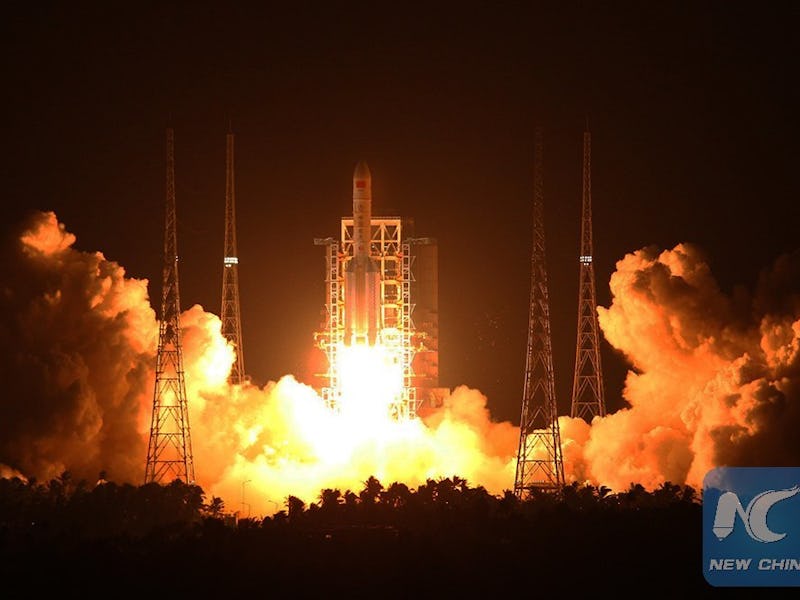China just launched its most powerful rocket yet: the Long March 5. Applause erupted from the control room as the maiden voyage of the rocket began at 8:43 p.m. local time Thursday, following a nearly three-hour delay, from the Wenchang space launch base on southern Hainan Island off the country’s southern coast. The launch of the heavy-lift rocket gives China’s space dreams a major boost.
Long Mach 5 is China’s answer to heavy-lift rockets developed by the U.S. and Europe, like the Delta IV Heavy, and the Ariane 5. At least for the moment that is — SpaceX, NASA, and Blue Origin are all developing much larger rockets.
The new heavy-lift vehicle will be the future workhorse of the Chinese space program, facilitating future lunar missions, Mars missions, and operations regarding China’s future space station.
A view of the boosters on the Long March 5.
Standing 57-meters tall, the 869-tonne can carry 25-tonnes to low-Earth orbit (that’s roughly 16 cars) or 14-tonnes to geosynchronous orbit — essentially doubling China’s current lifting capacity. Engineers designed two versions of the vehicle in order to accommodate a variety of missions and payloads.
Today’s launch was more than just a demonstration that the new rocket could fly, it was also carrying a very special payload to orbit. Tucked inside the 5-meter fairing was the Shijian-17 satellite — a test satellite.
The giant rocket performed beautifully, sending the Shijian-17 satellite into the proper orbit. The experimental satellite is designed to test out new ion propulsion technology, which will not only boost the country’s capabilities for launching larger satellites into geosynchronous orbit (potentially giving other launchers a run for their commercial contracts) but will be critical for missions to the moon and Mars.
Next year, China will attempt the first lunar sample return mission since the Apollo era ended in the 1970s with their Chang’e-5 mission, which will launch on a Long March 5. In 2018, another Long March 5 will loft the core module of China’s full-sized space station into orbit. Two years later, in 2020, the Long March 5 will launch China’s first interplanetary mission by sending an orbiter, lander, and a rover to the red planet.
Today’s launch is the result of more than 15 years of hard work and dedication. The rocket is so massive that the only way to transport it is via ship, which meant a new coastal launch site had to be built.
Besides a successful testing of Long Mach 5, the launch the launch is further validation of the advantages of the new Wenchang launch complex. As opposed to its inland counterparts, Wenchang is located closer to the equator, which means rocket’s launched from there can take advantage of the natural boost from the earth’s rotation, reducing the amount of propellant the rocket has to carry. The location also allows the rocket to fly over the South Pacific, reducing the possibility of debris falling into populated areas.
